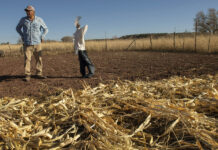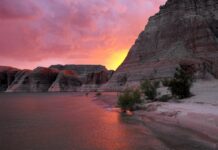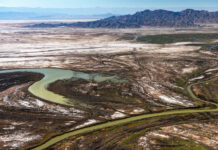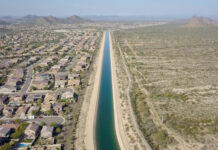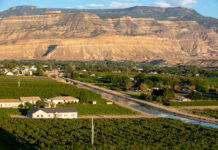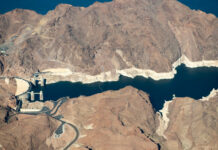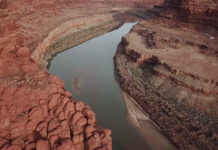Praying for rain
The Zuni tribe's homeland is one of the most parched sections of the country. The tribe has already declared three drought emergencies in the last 15 years. Will it survive the next one?
Questions simmer about Lake Powell’s future as drought, climate change point to a drier...
Lake Powell faces demands from stakeholders with different water needs as runoff is forecast to decline due to warmer, drier conditions.
Thirsty future for American West, as “megadrought” grips some of the fastest-growing U.S. cities
By Alexandra Tempus, Fair Warning
In 2002, Utah was reeling from four years of dry conditions that turned the state “into a parched tinderbox,’’ as the Associated Press reported at...
Cloud seeding study validates ski industry staple
Cloud seeding disperses dust-sized silver iodide particles into clouds so that ice crystals can form on those particles and fall to the ground as snow.
As the Salton Sea shrinks, it leaves behind a toxic reminder of the cost...
Scientists fear that eventually the toxic residue of more than a century of agricultural runoff will be blown into the air — and into the lungs of residents.
Crisis on the Colorado Part V: Bringing New Life to a Stressed River
The Colorado River has been dammed, diverted, and slowed by reservoirs, strangling the life out of a once-thriving ecosystem. But in the U.S. and Mexico, efforts are underway to revive sections of the river and restore vital riparian habitat for native plants, fish, and wildlife.
Crisis on the Colorado Part IV: In Era of Drought, Phoenix Prepares for a...
Once criticized for being a profligate user of water, fast-growing Phoenix has taken some major steps — including banking water in underground reservoirs, slashing per-capita use, and recycling wastewater — in anticipation of the day when the flow from the Colorado River ends.
Crisis on the Colorado Part III: Running Dry– New Strategies for Conserving Water
Communities along the Colorado River are facing a new era of drought and water shortages that is threatening their future. With an official water emergency declaration now possible, farmers, ranchers, and towns are searching for ways to use less water and survive.
Crisis on the Colorado Part II: On a Water-Starved River, Drought Is the New...
With the Southwest locked in a 19-year drought and climate change making the region increasingly drier, water managers and users along the Colorado River are facing a troubling question: Are we in a new, more arid era when there will never be enough water?
Crisis on the Colorado Part I: The West’s Great River Hits Its Limits– Will...
As the Southwest faces rapid growth and unrelenting drought, the Colorado River is in crisis, with too many demands on its diminishing flow. Now those who depend on the river must confront the hard reality that their supply of Colorado water may be cut off.



